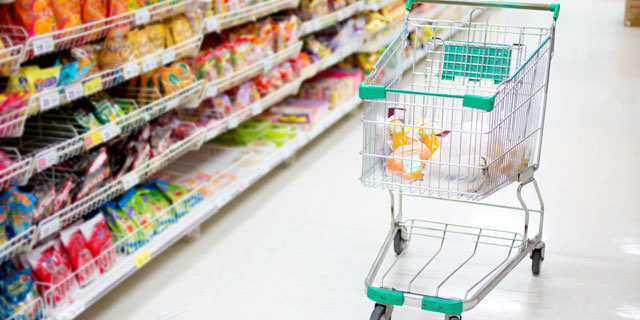Food is an industry. Though there are products that taste so strongly of home they give us actual pangs of love and longing, most products are peddled with money in mind. Consider the fact that you can likely recall commercial jingles faster than your own phone number. Supermarkets are also businesses, cogs in a larger system that aims to make money, and they’ve developed a whopping bag of tricks to ensure that you always fill up your basket.
This fact in and of itself is not a bad thing, but if it means that you’re probably spending a little more money than you intend to every time you hit the market. Understanding the psychology behind a grocery store and its marketing campaigns can save you money. Here’s how you can be an informed and money-conscious consumer.
Free Samples
As you may have guessed, your grocer isn’t giving you free food because he’s nice. Studies show that 47% of buying decisions are unplanned and 3% are in-store substitutions, which is why promotions like samples and sales can affect product sales considerably.
One finding by the American Marketing Association explained that alliesthesia (physiological motivational states like hunger or thirst) could increase a consumer’s attraction to multiple consumption cues. In other words, free samples in a grocery store are likely to increase the purchase not only of the sampled food or beverage but of rewarding items in general. Skip that free bite and you’ll save double: both on what’s on sale and on those extra products you haphazardly throw in to your cart.
[pagebreak]Fabricating Social-Connections
Next time you’re picking up some milk, keep an eye out for black and white ads, pictures of smiling grandparents, old pop-culture references, and throwback vintage packaging. If you made spotting nostalgia-based marketing schemes in grocery stores a drinking game, you’d fall down before hitting the checkout line.
A new study in the Journal of Consumer Research found that nostalgia does seem to “weaken a person’s desire for money” since it harkens back to youth, a time of little monetary concern. The authors stated, “We found that when people have higher levels of social connectedness and feel that their wants and needs can be achieved through the help of others, their ability to prioritize and keep control over their money becomes less pressing.” So when you find yourself drifting off in the aisles of the market, re-focus and check your list. You probably don’t need whatever it is you’re holding in your hand.
Layout and Ambiance
Anyone who has gone for a “quick” trip to the grocery store knows that there is simply no such thing. Ever wondered why? First of all, the most important items are farthest from the entrance; essentials like dairy and sliced bread are all the way in the back, meaning that you’ll have to traverse the tempting “Sale” sign-infested sea of potential impulse buys.
But that’s not all. The most fragrant sections like the produce, bakery, and flower sections are usually right by the entrance; the aromas of just-baked cookies and fresh flowers immediately welcome customers and evoke feelings of comfort and trust. Couple that with music with slower beats or positive lyrics and customers are subconsciously encouraged to linger and shop.
Oh, and don’t forget the strategically stacked shelves: expensive brand name items are usually at adult eye-level, making you more likely to see and purchase these big-ticket items. Cheaper bulk items rest on the bottom shelf, well out of sight and mind of the rushed consumer. And the sugarcoated and brightly colored products marketed to children are almost exclusively at kid-level, making it easier for children to see them, grab them, and nag you into buying them.
[pagebreak]More is Less
The American Psychological Association‘s article Too Many Choices summarized a series of studies that explain that humans naturally gravitate towards stores that offer the most options of a desired product. Ironically however, the greater the amount of options, the less likely we are to make informed decisions.
When overwhelmed by a myriad of similar products, we simply resort to snap judgments to avoid the hassle of wading through confusing options. This act is referred to as the “satisficing” option: the first decent choice that fits a preference as opposed to exhaustively scanning all options until finding the perfect, or “maximizing” one. Product developers and heads of marketing are aware of this tendency, which is why they will make product designs as eye-catching as possible; in large groups we are more likely to pick the flashiest option over the best option. Next time, take a moment to read labels, do a little research, and have some patience.
Waiting in Lines
The products placed near the cashiers serve two purposes. First, a 2013 study published in Management Science showed that consumers usually assume that the length of checkout lines at grocery stores are direct indicators of how long check out will take, and fail to take into consideration other variables that can extend the check out time (i.e. the size of others’ shopping haul). Because occupied time feels shorter than unoccupied time, all supermarkets have “last-minute” snacks and knick-knacks strategically placed near registers to keep you occupied. Also, the pressure of time constraints serve as incentive to make rash decisions, like say, buying a candy bar you really don’t need.
So now that you’re armed with all the inside info, take a deep breath, consult your list, and attack the grocery story with precision and determination!


![Making Mealtime Matter with La Familia: Easy Sofrito [Video]](https://thelatinkitchen.com/wp-content/uploads/2015/10/sofrito-shutterstock__0-500x383.jpg)
![Easy Latin Smoothies: Goji Berry Smoothie [Video]](https://thelatinkitchen.com/wp-content/uploads/2015/12/goji_berry-shutterstock_-500x383.jpg)
















![Fun and Fast Recipes: Fiesta Cabbage Salad [Video]](https://thelatinkitchen.com/wp-content/uploads/2015/11/fiesta_cabbage_slaw-shutterstock_-500x383.jpg)









